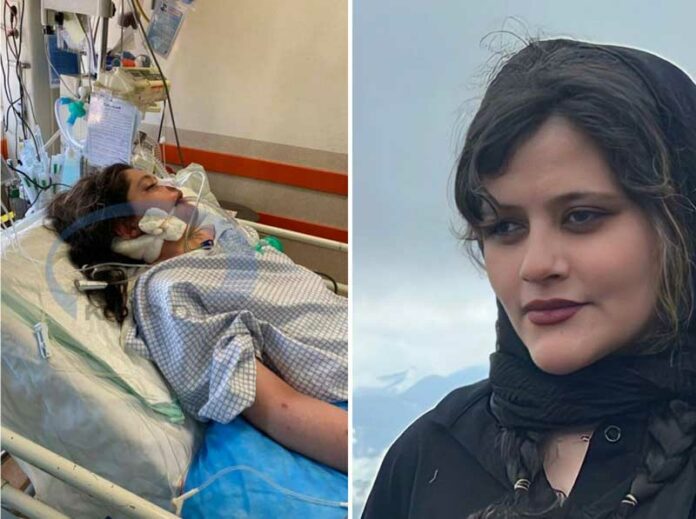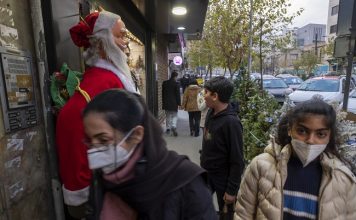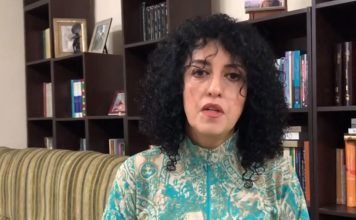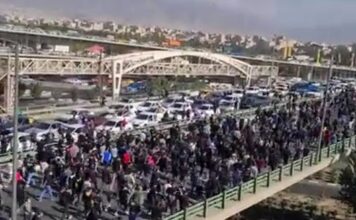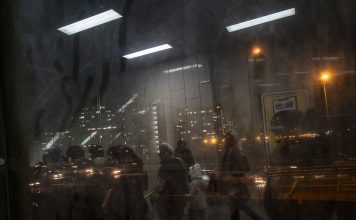DUBAI, Sept 17 (Reuters) – Protests broke out in western Iran on Saturday at the funeral of a young woman who died after being detained by morality police enforcing strict hijab rules, and security forces used tear gas to disperse demonstrators.
Videos posted on social media showed protesters shouting anti-government slogans after gathering in Saqez, hometown of Mahsa Amini. They came from nearby cities in Iran’s Kurdistan province to mourn the 22-year-old who died in a hospital in the capital Tehran on Friday.
At least four people have been injured after security and police officers opened fire on protestors protesting #Mahsa_Amini's killing in Saqqez, Kurdistan Province.pic.twitter.com/3GNJjmuqWG
— 1500tasvir_en (@1500tasvir_en) September 17, 2022
Despite the Islamic Republic's massive propaganda system, security and police officers beat a protesting woman and made her fall to the ground on the day of her burial to prove that they didn't kill #Mahsa_Amini.pic.twitter.com/0svEMGk0TA
— 1500tasvir_en (@1500tasvir_en) September 17, 2022
Islamic Republic oppressive forces turn #MahsaAmini's funeral into a blood bath. They fired live ammo and tear gas at protesters to Mahsa's murder by regime "Hijab Commanders!" Clashes ongoing…
22yo 's body was taken to Saqez by regime forces in secret.#مهسا_امینی#IranTruth pic.twitter.com/Ntgt9eVPzy— IranTrue (@iran_true) September 17, 2022
“Death to the dictator” – a reference to Supreme Leader Ayatollah Ali Khamenei, chanted the crowd, while some women took off their headscarves. Police were seen firing tear gas and one man was shown on a video with an injury to the head that someone could be heard saying was caused by birdshot. Reuters could not authenticate the videos.
Protests spread to the provincial capital, Sanandaj and continued late into the night. Social media videos showed crowds chanting “Saqez is not alone, it’s supported by Sanandaj”. Marchers were seen confronting riot police amid the sound of sporadic gunfire. Other posted videos showed youths setting fire to tyres and throwing rocks at riot police across clouds of tear gas.
In recent months, rights activists have urged women to publicly remove their veils, a gesture that would risk their arrest for defying the Islamic dress code as the country’s hardline rulers crack down on “immoral behaviour”. Read full story
Videos posted on social media have shown cases of what appeared to be heavy-handed action by morality police units against women who had removed their hijab.
This time it is a young girl named #MahsaAmini, who reminds me of my own daughters, who has become the victim of the misogynist Islamic Republic. I call on all of my compatriots, men & women, to stand up against this monstrosity and to support the freedom-seeking women of #Iran. https://t.co/EgT1aVSfuP
— Reza Pahlavi (@PahlaviReza) September 16, 2022
INVESTIGATION INTO DEATH
Authorities have launched probes into the death of Amini, but a medical examiner said on Saturday results of forensic tests may take three weeks. Interior Minister Abdolreza Rahmani Fazli told state TV there was no report she was beaten.
Police said Amini became ill as she waited with other detained women at a morality police station, rejecting allegations on social media that she was likely beaten.
Police released closed-circuit television footage apparently supporting their version of events. Reuters could not authenticate the video, which appeared to have been edited.
Police earlier said Amini had suffered a heart attack after being taken to the station to be “educated”. Her relatives have denied she suffered any heart condition.
Iran’s Internet Rights and Freedoms ‘In Deep Freeze,’ Netblocks Founder Says
Prominent sports and arts figures posted critical social media comments about Amini’s death and protests were held in a Tehran on Friday amid a heavy presence of riot police.
As during past protests, authorities appeared to have restricted mobile internet access in Saqez and nearby areas, social media posts said.
Internet blockage observatory NetBlocks reported “a significant internet outage” in Tehran on Friday, linking it to the protests. Read full story
Under Iran’s sharia, or Islamic law, imposed after the 1979 revolution, women are obliged to cover their hair and wear long, loose-fitting clothes to disguise their figures. Violators face public rebuke, fines or arrest.
Decades after the revolution, clerical rulers still struggle to enforce the law, with many women of all ages and backgrounds wearing tight-fitting, thigh-length coats and brightly coloured scarves pushed back to expose plenty of hair.
(Reporting by Dubai newsroom; Editing by Alex Richardson and David Gregorio)

